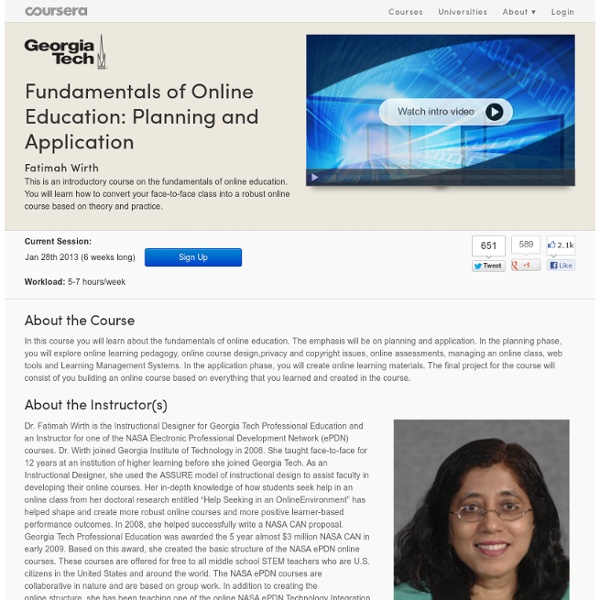Fundamentals of Online Education: Planning and Application
In this course you will learn about the fundamentals of online education. The emphasis will be on planning and application. In the planning phase, you will explore online learning pedagogy, online course design,privacy and copyright issues, online assessments, managing an online class, web tools and Learning Management Systems. In the application phase, you will create online learning materials. As a student enrolled in this course, you will have free access to selected chapters and content for the duration of the course. The class will consist of lecture videos, which are between 5 and 12 minutes in length.
What Will You Click On Next? Focusing Our Attention Online
Culture Teaching Strategies Lenny Gonzales The onslaught of information from the wired world can be overwhelming to anyone — even the savviest online audiences. But rather than completely shut out the digital world, the smarter solution is to learn how to manage it, says author Howard Rheingold. In his book Net Smart: How to Thrive Online, Rheingold outlines the potential merits of the vast digital landscape, and offers ideas on how to lasso the unwieldy aspects and use it for good. In a recent conversation on the Forum talk program, Rheingold stresses the importance of intention when it comes to managing digital noise. “I think [there's] this matter of meta-cognition, of knowing where you’re putting your attention,” he told Michael Krasny on Forum. “You need to make decisions. Rheingold advises all of us to create a specific plan when we’re online, and to follow through. “You have to make [decisions] in the context of what you intend to get done for the day. Related
Related:
Related:



